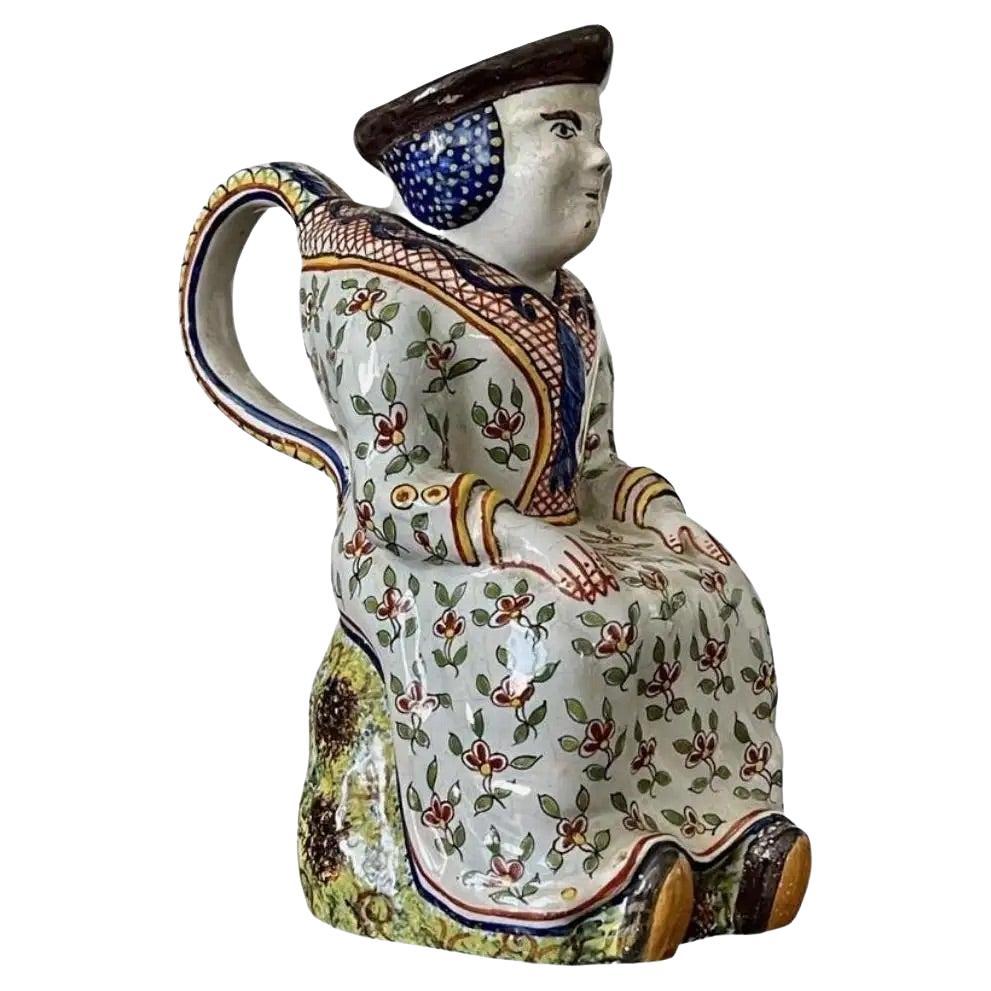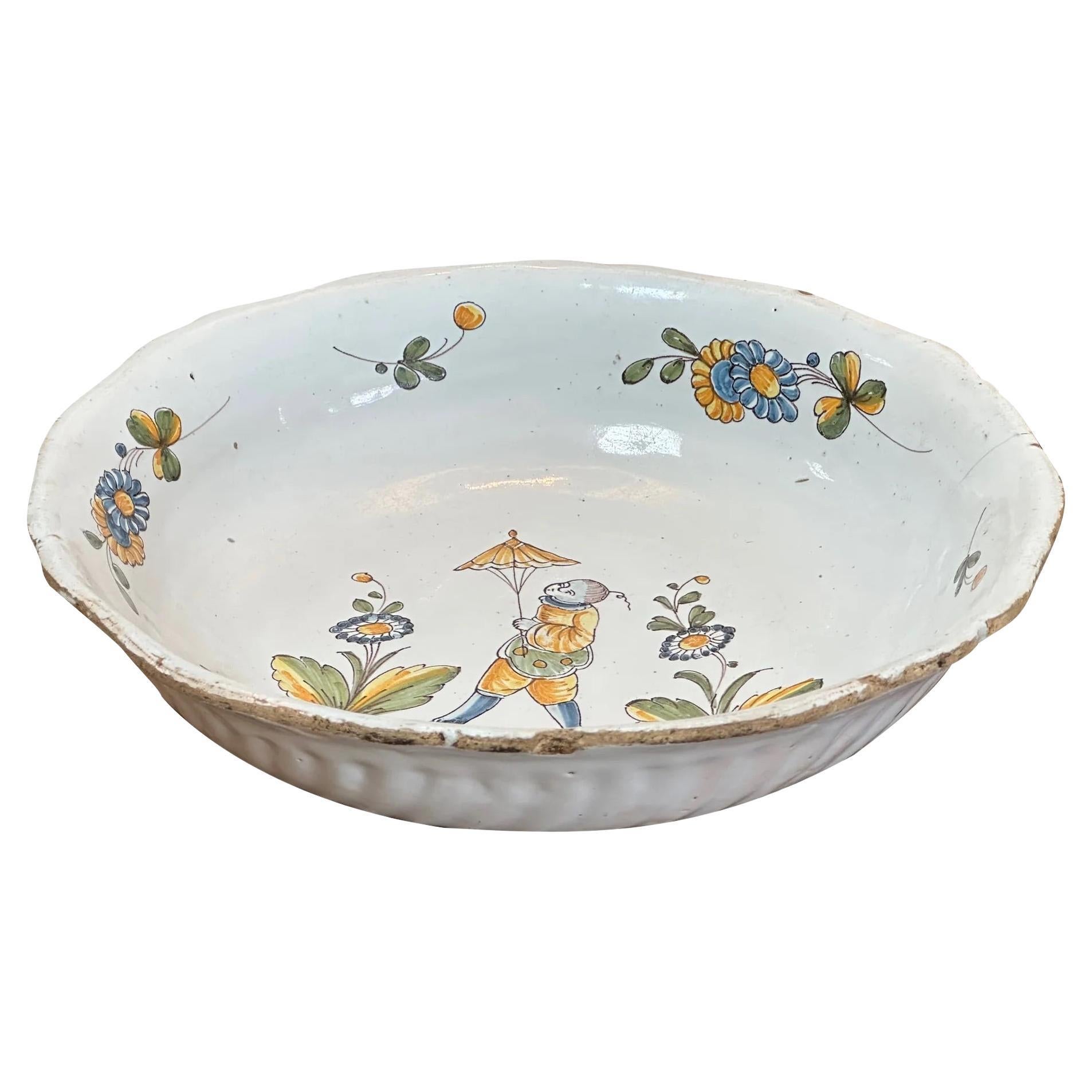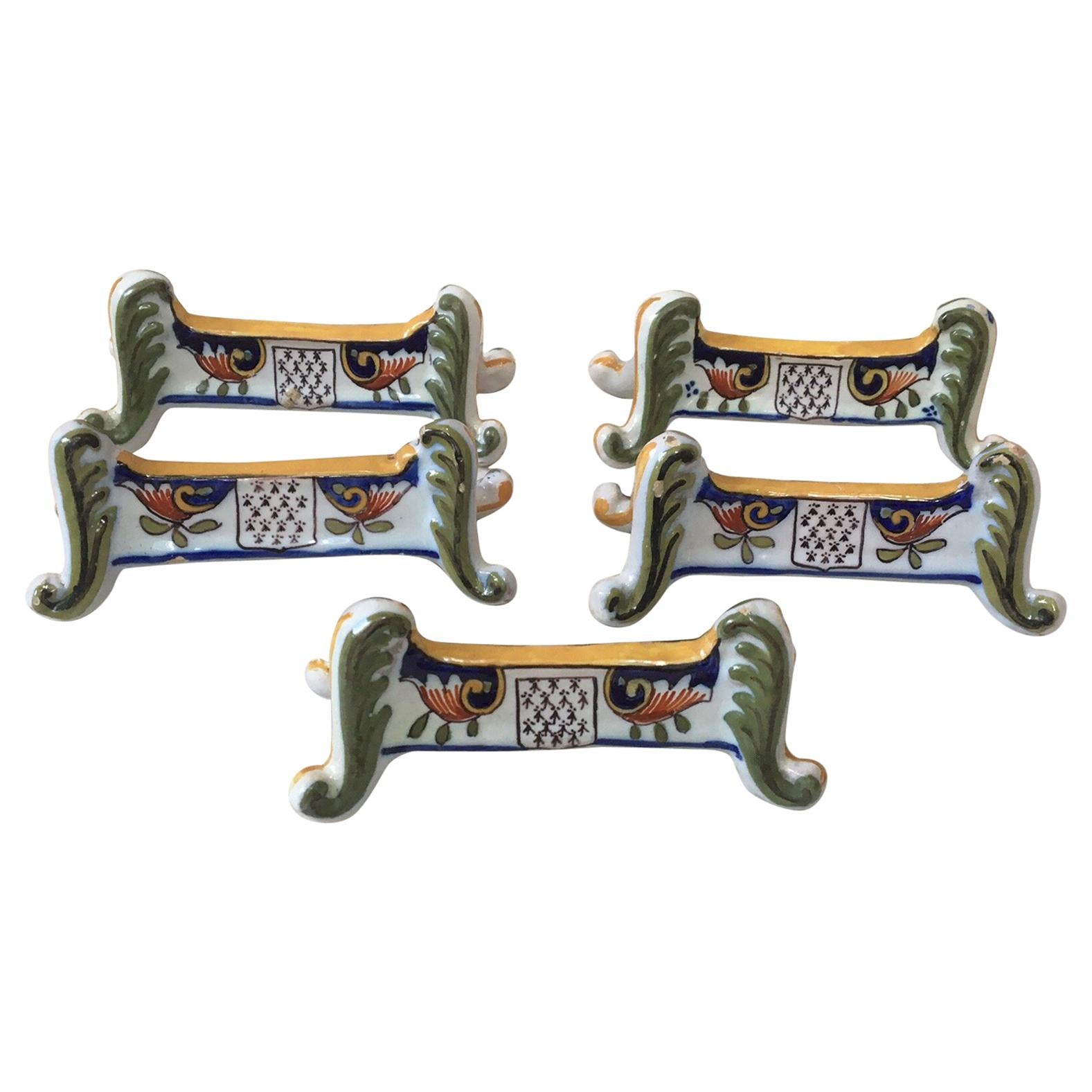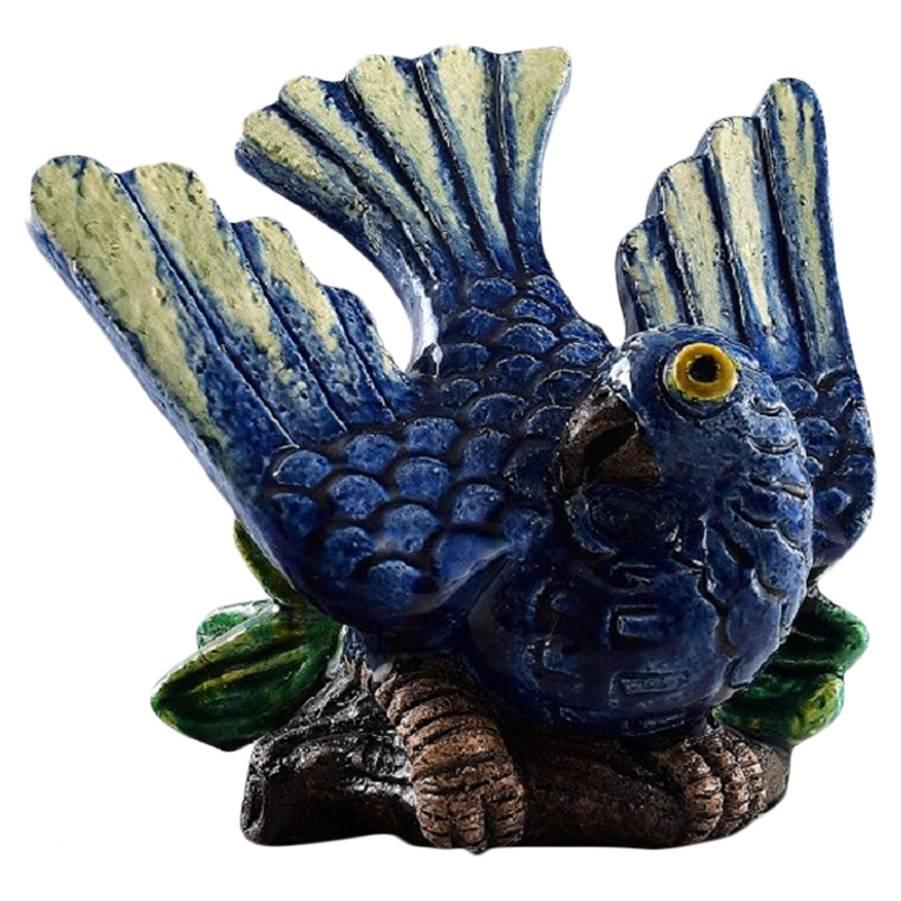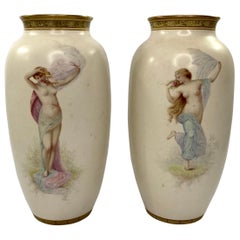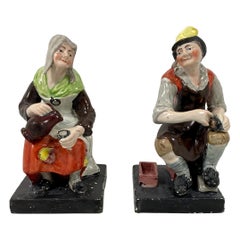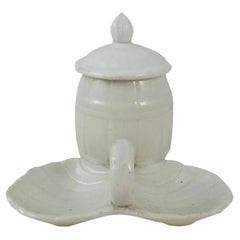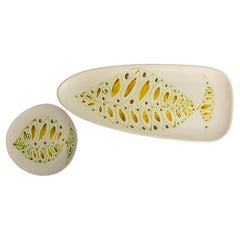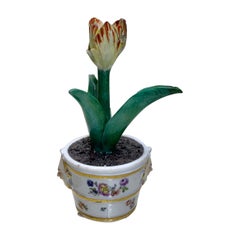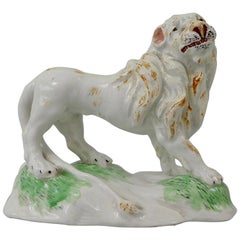
Rare Niderviller Faience Figure of a Lion, circa 1780, Count Custine Period
View Similar Items
Want more images or videos?
Request additional images or videos from the seller
1 of 13
Rare Niderviller Faience Figure of a Lion, circa 1780, Count Custine Period
About the Item
- Creator:Niderviller Porcelain Manufactory (Manufacturer)
- Dimensions:Height: 3.94 in (10 cm)Width: 4.73 in (12 cm)Length: 3.94 in (10 cm)
- Style:Louis XVI (Of the Period)
- Materials and Techniques:Faience,Fired
- Place of Origin:
- Period:
- Date of Manufacture:circa 1780
- Condition:
- Seller Location:Gargrave, GB
- Reference Number:1stDibs: LU4397119161122
About the Seller
5.0
Vetted Seller
These experienced sellers undergo a comprehensive evaluation by our team of in-house experts.
Established in 1982
1stDibs seller since 2019
43 sales on 1stDibs
Typical response time: 1 hour
More From This SellerView All
- Pair of Doulton Lambeth Faience Vases. J.P. Hewitt, circa 1885By Doulton LambethLocated in Gargrave, North YorkshireA fine pair of Doulton Lambeth faience vases, painted by John P. Hewitt, circa 1885. Both vases, beautifully hand painted with semi naked girls...Category
Antique 1880s English Victorian Ceramics
MaterialsEarthenware
- Pair of Staffirdshire Figures ‘Jobson & Nell’, Enoch Wood, circa 1820By Enoch Wood & SonsLocated in Gargrave, North YorkshirePair of Staffordshire pottery figures, probably Enoch Wood factory, circa 1820. The figures very well modelled as ‘Jobson and Nell’. The se...Category
Antique 1820s English Georgian Ceramics
MaterialsEarthenware
- English Pottery Slipware Baking Dish, 18th CenturyBy StaffordshireLocated in Gargrave, North YorkshireEnglish pottery slipware baking dish, late 18th century. The plain edged, brown glazed dish, trailed in creamy yellow slip, with a wriggled, trellis design, b...Category
Antique 1780s English Georgian Ceramics
MaterialsEarthenware
- Kenjo Imari Tokuri, Arita, Japan, circa 1700, Genroku PeriodBy AritaLocated in Gargrave, North YorkshireJapanese Imari porcelain tokuri, Arita, circa 1700, Genroku Period. The squared vessel painted with shaped panels of flowering plants, upon textile design inspired grounds. Rising to...Category
Antique Early 1700s Japanese Edo Ceramics
MaterialsPorcelain
- Kenjo Imari Ewer & Cover, Arita, Japan, circa 1700, Genroku PeriodBy AritaLocated in Gargrave, North YorkshireA fine Japanese porcelain Kenjo Imari ewer and cover, Arita, c. 1700, Genroku Period. The squared pot, painted with large panels of pavilions, in river lan...Category
Antique 18th Century Japanese Edo Ceramics
MaterialsPorcelain
- Japanese Imari charger of large size, Arita, c. 1700, Genroku Period.By AritaLocated in Gargrave, North YorkshireA large Japanese Imari deep charger, Arita, c. 1700, Genroku Period. Hand painted to the centre, with a large vase containing a profusion of flowers, upon a terrace. The broad border...Category
Antique 17th Century Japanese Edo Ceramics
MaterialsPorcelain
You May Also Like
- French White Faience Salt & Pepper Set Nidervillers, Circa 1900By Niderviller Porcelain ManufactoryLocated in Austin, TXAntique French white ceramic salt, pepper, mustard set in a form of barrel signed Nidervillers, circa 1900.Category
Antique Early 1900s French Rustic Serving Pieces
MaterialsCeramic
- French Set of Two Fish Dishes in White Faience of Niderviller circa 1960By Niderviller Porcelain ManufactoryLocated in Labrit, LandesDishes set: long fish dish or centerpiece and plate, France Midcentury. The two pieces were made in Niderviller Manufactury in the East of France. The Niderviller manufactory is stil...Category
Mid-20th Century French Mid-Century Modern Garniture
MaterialsFaience
- Rare Meissen Marcolini Tulip in a Tub circa 1780 PorcelainBy Meissen PorcelainLocated in London, GBA Superb Meissen Marcolini tulip in a tub, Circa 1780. Fine quality Meissen porcelain model of a flowerpot, modelled as cylindrical tub enhanced in gilt with 2 mythological masks on...Category
Antique 1780s German Ceramics
MaterialsPorcelain
- Early French Faience Figural JugLocated in Charlottesville, VAFrench Faience Figural Jug the unglazed underside with the 17th-century mark "F.C", possibly Marseilles, in the form of a woman seated upon a grassy mound, polychrome painted with a ...Category
Antique 17th Century French Ceramics
MaterialsCeramic, Faience
- Early French Faience Figural JugLocated in Charlottesville, VAFrench Faience Figural Jug the unglazed underside with the 17th-century mark "F.C", possibly Marseilles, in the form of a woman seated upon a grassy mound, polychrome painted with a ...Category
Antique 17th Century French Ceramics
MaterialsFaience
- Two Pairs of Italian Maiolica Baskets, circa 1780By Antonio FerrettiLocated in Milano, ITTwo pairs of maiolica baskets Antonio Ferretti Manufacture Lodi, circa 1770-1790 Maiolica polychrome decorated “a piccolo fuoco” (third fire). Measures: A) Height 3.54 x 6.69 x 9.84 in (9 x 17 x 25 cm); B) Height 3.93 x 7.48 x 11.02 in (10 x 19 x 28 cm). Total weight 4.85 lb (2.200 kg) State of conservation: A) One of the smaller baskets has some areas of restoration, the other slight chipping from use; B) One of the larger baskets is intact and the other shows a clearly glued break. The mold with which the baskets were forged simulates a wicker weave. The two larger works have high, vertical walls, with branch-shaped handles penetrating the weave. The painted decorations, small polychrome flowers applied only externally, highlight the points where the weaves intersect. The decision to leave the center of the basket devoid of decoration is highly unusual, but given the size and complexity of the shape, as well as the quality of the enamel, it is possible to hypothesize that it represents a precise choice in manufacturing or for a particular client. The two smaller baskets have small, twisted handles and, on the outside, reproduce more decisively the characteristic wicker weave, obtained through thin molded lines. The interior exhibits a rich, typical decoration of naturalistic flowers: a bunch centered around a main flower and secondary stems accompanied by small “semis”. The exterior of these works is also adorned with small little flowers where the weaves intersect. The size and morphological characteristics of the baskets confirm their attribution to the Lodi factory of Antonio Ferretti between 1770 and 1790, during its most successful period; by this point his original reworking of the "Strasbourg" decoration, known as "old Lodi", had achieved great fame even outside Italy. This decorative choice represented a strong point of the Lodi factory, which established itself thanks to the vivid nature of the colors made possible by the introduction of a new technique perfected by Paul Hannong in Strasbourg and which Antonio Ferretti introduced in Italy. This production process, called “piccolo fuoco” (third fire), allowed the use of a greater number of colors than in the past; in particular, the purple of Cassius, a red made from gold chloride, was introduced. Its use allowed for many more tones and shades, from pink to purple. The Ferretti family had started their maiolica manufacturing business in Lodi in 1725. The forefather Simpliciano had started the business by purchasing an ancient furnace in 1725 and, indeed, we have evidence of the full activity of the furnaces from April of the same year (Novasconi-Ferrari-Corvi, 1964, p. 26 n. 4). Simpliciano had started a production of excellence also thanks to the ownership of clay quarries in Stradella, not far from Pavia. The production was so successful that in 1726 a decree of the Turin Chamber came to prohibit the importation of foreign ceramics, especially from Lodi, to protect internal production (G. Lise, La ceramica a Lodi, Lodi 1981, p. 59). In its initial stages, the manufacture produced maolicas painted with the “a gran fuoco” (double fire) technique, often in turquoise monochrome, with ornamentation derived from compositional modules in vogue in Rouen in France. This was also thanks to the collaboration of painters like Giorgio Giacinto Rossetti, who placed his name on the best specimens next to the initials of the factory. In 1748 Simpliciano made his will (Gelmini, 1995, p. 30) appointing his son Giuseppe Antonio (known as Antonio) as universal heir. After 1750, when Simpliciano passed away, Antonio was directly involved in the maiolica factory, increasing its fortunes and achieving a reputation on a European level. Particularly important was the aforementioned introduction in 1760 of the innovative “a piccolo fuoco” (third fire) processing, which, expanding the ornamental repertoire with Saxon-inspired floral themes, could commercially compete with the German porcelains that had one of its most renowned offerings in the naturalistic Deutsche Blumen. Antonio Ferretti understood and promoted this technique and this decoration, proposing it in a fresher and more corrective version, less linked to botanical tables...Category
Antique 1770s Italian Neoclassical Ceramics
MaterialsMaiolica
Recently Viewed
View AllMore Ways To Browse
Faience Figure
Silver Lion Figure
Set Of 10 Louis Xvi
Faience Lion
18th C French Faience
18th Imari
Japanese Large Plate
English Antique Ironstone
Antique English Ironstone
Imari 18th Century
Pink Mold Glass
Mason Plates
Ceramic Tile Paintings
Ceramic Figural Pottery
Jouve Georges
George Jouve
Antique Rose Medallion Porcelain
Wedgwood Brown



